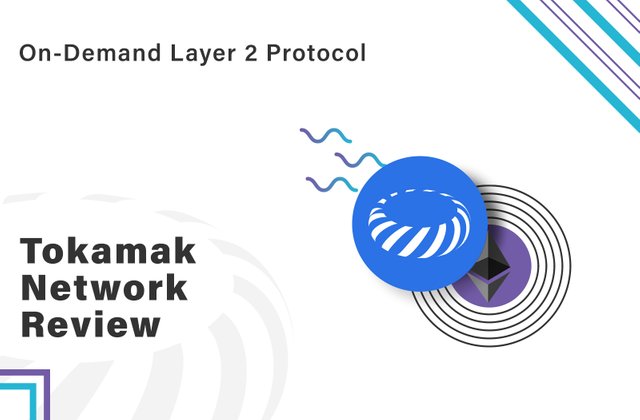
One of the most anticipated layer 2 solutions for the Ethereum blockchain, Tokamak Network, is set to be launched, offering developers a trustless and easy way to build decentralised applications (DApps).
The launch of the on-demand platform will open up multiple possibilities for the developer community, tech companies, and other mainstream institutions seeking to adopt blockchain technology.
What is the Tokamak Network?
Tokamak Network is an on-demand layer 2 platform that allows developers to create new applications on the Ethereum network in an easy and trustless manner. They are establishing an entire ecosystem around the platform where developers can access the tools, talent, and community on-demand needed in building their projects.
Tokamak Network is a Turing Complete Plasma Layer 2 Protocol that supports the creation of DApps on the Ethereum blockchain. The platform is among the first of its kind to successfully deploy the plasma protocol thus providing a viable solution for building applications on Ethereum in a scalable manner.
Additionally, Tokamak will significantly boost the functionality, usability, and interoperability of Ethereum whilst enhancing security and data availability for multiple applications.
Tokamak Network’s mission is to support various services from DApp projects to infrastructure solutions, in order to meet the requirements for Ethereum mass adoption, eventually. As such, Tokamak is building an ecosystem around their solution to provide a gateway for others seeking to adopt blockchain technology.
The platform will act as an aggregator allowing other layer 2 players to easily create novel solutions by leveraging the various tools available on the Tokamak ecosystem.
Another goal of the Tokamak Network is to expand the entire blockchain industry through collaboration rather than competition among layer 2 players.
As such, rather than compete, they intend to collaborate with peers and other organisations interested in developing scaling solutions for the Ethereum blockchain. This is aimed at creating trust, building synergy and consolidating multiple methods into a unitary approach to this complex problem.
Ethereum’s scalability problem
Ethereum is built as one of the most robust and secure blockchains, attributes that have made it one of the most used platforms for building decentralised applications. The protocol’s smart contract allows users to create virtual assets, tokenize real world assets, and make payments among many other functions.
Over the years, the Ethereum blockchain usability has grown even more as its evolution continues at a rapid pace. This evolution has opened up unlimited possibilities that have even given birth to entire sectors like Decentralised Finance (DeFi) currently worth over $11 billion. This increased interest and activity has unfortunately stretched the Ethereum blockchain to its limits. Particularly, the network has been overwhelmed by the numerous transactions in the DeFi space causing gas prices to soar.
This explosive growth has come as a timely reminder about the need to develop scaling solutions to help the network expand its capacity, thus enhancing its usability globally.
However, by design, the Ethereum blockchain is quite difficult to scale. Its core infrastructure is quite rigid while the network currently has thousands of users. Thus any attempt to alter its design could severely affect its usability and have adverse effects on its users.
Moreover, the various potential on-chain solutions are delimited by the trilemma index of scalability, security, and decentralisation. This means, any attempt to alter one of these attributes is detrimental to the other two. Therefore, any on-chain scaling solutions are off the table, at least at the moment.
For now, layer 2 scaling solutions are the most viable alternatives.
Layer 2 Ethereum scaling solutions
Layer 2 solutions are built on top of the Ethereum main-chain. As such, they do not require any changes on the core protocol and exist as smart contracts that regularly interact with the main-chain. These attributes make them ideal scaling solutions as they can operate off-chain thus significantly reducing demand for the main-chain.
Plasma, state channels, sharding, and side chains are some of the popular Layer 2 proposed solutions for Ethereum’s scalability. Though they are partly similar, each of these proposals differ in execution, suitability, and sustainability.
The Tokamak Network deploys the Plasma protocol, which is considered as one of the most viable solutions for substantially increasing the transaction throughput of the platform.
Tokamak Network’s ecosystem to serve as an aggregator for DApps
The Tokamak Network has already built a Turing completed protocol by leveraging the Plasma technology. The platform will enhance Ethereum’s scalability as it supports the creation of DApps on its off-chain infrastructure.
With the Tokamak Network having all functionalities of the main chain, these DApps will be able to operate outside of the main chain entirely thus reducing dependency on Ethereum’s core protocol.
Having successfully developed this solution, Tokamak Network does not intend to stop there but is looking forward to enhancing the robustness of the Ethereum blockchain by establishing the on-demand platform.
As such, they are opening up their platform and existing tools for widespread use by those intent on creating DApps and other solutions that enhance Ethereum usability.
Tokamak Network aims to provide a protocol allowing easy deployment of diverse turing-complete plasma chains. Tokamak Network sets the “correct state transition” criterion in the plasma chain by separately defining the rules for changing the “arbitrary state” in the root chain. It expands the use of plasma chains as a general state transition system (layer2).
Therefore, Tokamak Network will not only resolve the scalability problems of decentralized applications (DApps) in Ethereum, but also provide an environment that can allow easy deployment of applications that was not implemented in the past due to Ethereum’s performance and functional limitations.
Looking like will come a long way
Downvoting a post can decrease pending rewards and make it less visible. Common reasons:
Submit